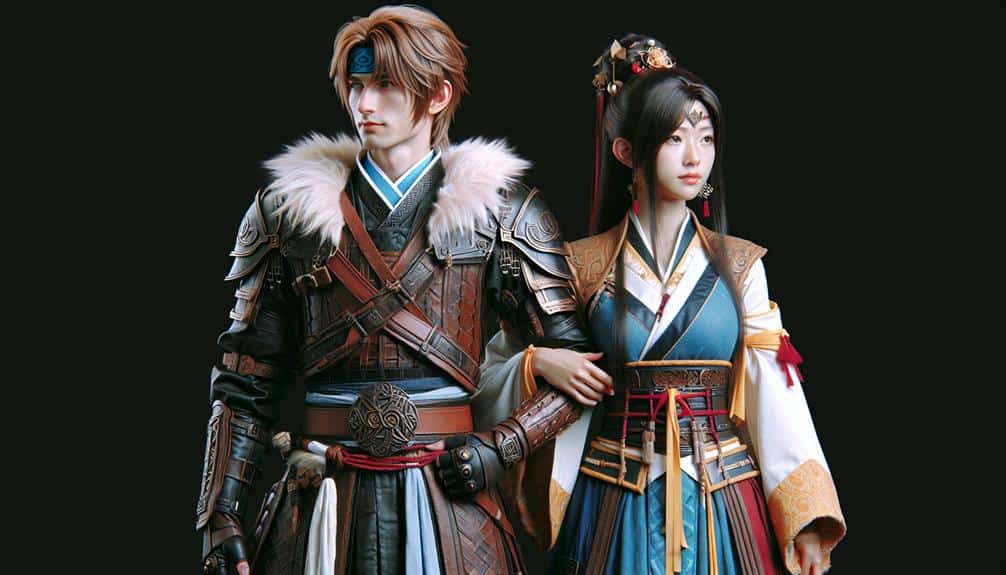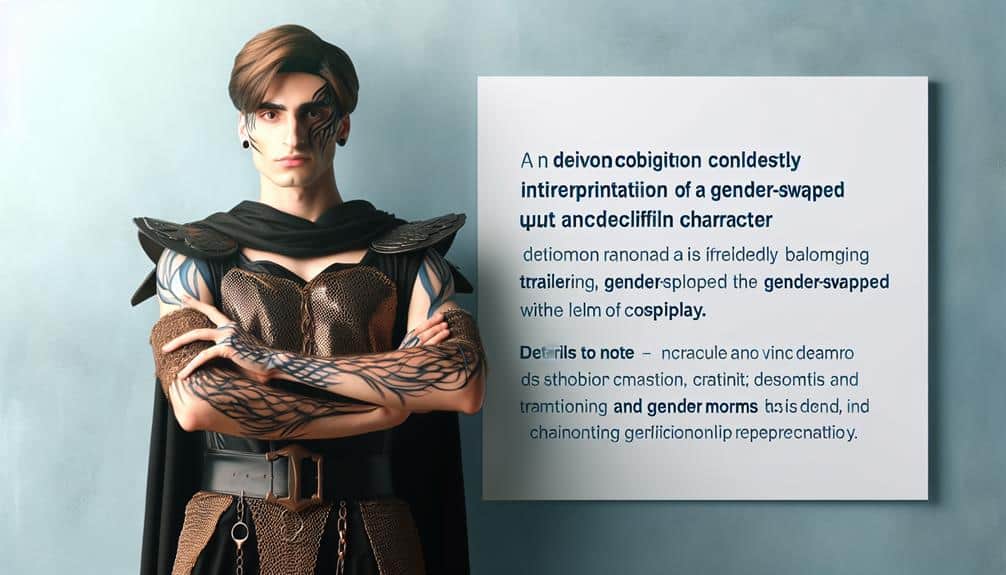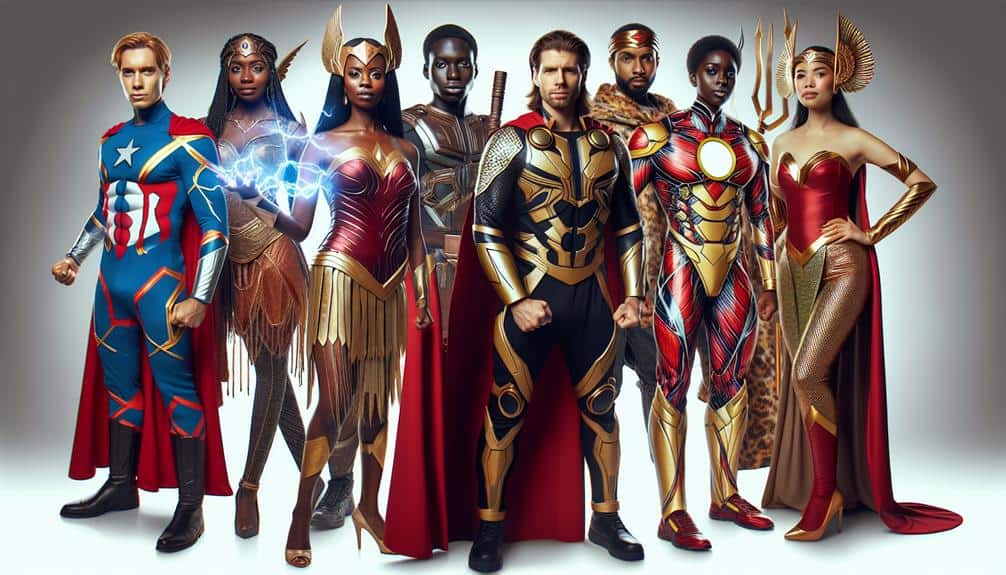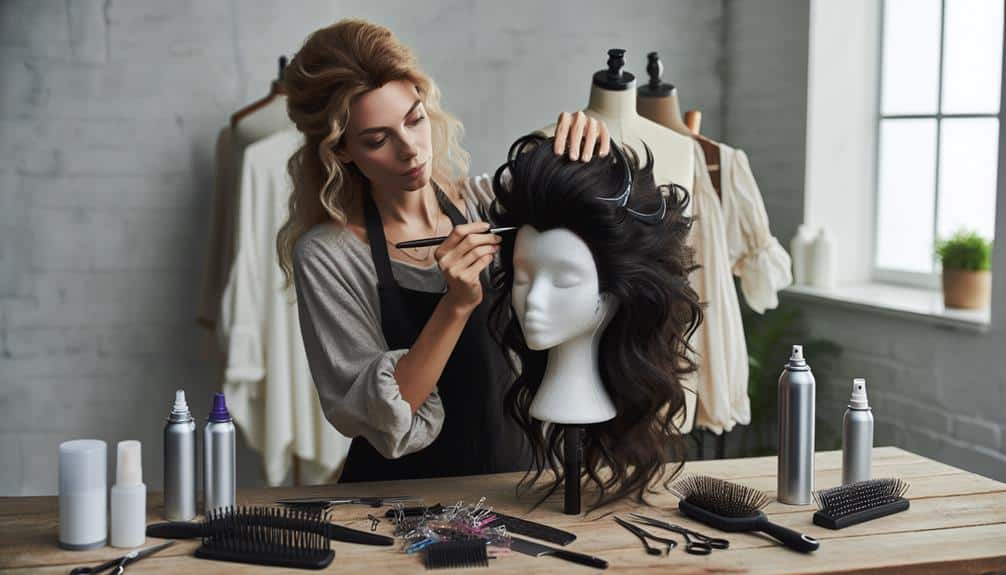Imagine cosplay as a canvas, where each participant paints their interpretation of a beloved character. Now, consider the differences between traditional and genderbent cosplay as varying brush strokes on this canvas.
The choices made in portraying a character through gender play a significant role in the final masterpiece. As you explore the nuances between these two forms of cosplay, you may uncover intriguing insights into how personal identity and creative expression intersect within the cosplay domain.
Key Takeaways
- Genderbent cosplay challenges gender norms by portraying characters of a different gender.
- Traditional cosplay stays true to the character's original gender representation.
- Costume selection influences character portrayal and allows for gender reinterpretation.
- Inclusivity and creativity thrive in the cosplay community through gender fluidity and diverse portrayals.
Definition of Genderbent and Traditional Cosplay
When diving into the world of cosplay, understanding the distinction between genderbent and traditional cosplay is essential for enthusiasts. Gender portrayal plays a significant role in how characters are interpreted and represented within the cosplay community.
Genderbent cosplay involves individuals portraying characters of a different gender than originally depicted in the source material. This trend has gained popularity in recent years as a way to challenge traditional gender norms and showcase creativity in costume design.
On the other hand, traditional cosplay involves accurately representing the gender of the character as it's in the original source material.
Cosplay trends often influence the choice between genderbent and traditional cosplay. While traditional cosplay remains a classic approach, genderbent cosplay offers a fresh perspective on well-known characters.
The flexibility of genderbent cosplay allows for a reinterpretation of characters, providing a creative outlet for cosplayers to showcase their skills in costume design and gender portrayal. Understanding these distinctions will enable cosplayers to make informed decisions when selecting their cosplay approach.
Costume Selection and Gender Representation
In costume selection for cosplay, the representation of gender is a pivotal aspect that influences the portrayal of characters and the overall authenticity of the cosplay. Gender fluidity plays a significant role in costume creativity, allowing cosplayers to reinterpret characters in new and exciting ways. By challenging traditional gender norms through cosplay, individuals can showcase a diverse range of expressions and identities.
When it comes to representation, the costume becomes a tool for character embodiment. Whether sticking closely to the original design or incorporating genderbent elements, cosplayers have the opportunity to explore and celebrate different facets of a character's personality. This not only adds depth to the portrayal but also fosters a sense of inclusivity within the cosplay community.
Ultimately, costume selection in cosplay goes beyond mere aesthetics; it serves as a means of self-expression and empowerment. Embracing gender fluidity and pushing the boundaries of traditional norms through costume creativity allows cosplayers to embody characters in a way that resonates with their own identity, making each portrayal unique and meaningful.
Challenges and Stereotypes in Cosplay Community
Gender representation in cosplay not only influences character portrayal but also impacts how challenges and stereotypes manifest within the cosplay community. Societal expectations often play a significant role in shaping these challenges. For instance, there may be stereotypes surrounding what characters individuals should cosplay based on their gender. This can create barriers for individuals who want to explore characters outside of traditional gender norms. Inclusivity within the cosplay community is vital to combatting these stereotypes. By promoting an environment that embraces creative freedom regardless of gender, cosplayers can feel empowered to embody any character they resonate with, breaking free from limiting societal expectations.
Furthermore, challenges like body shaming and discrimination can also arise within the cosplay community, affecting individuals of all genders. It's important for cosplayers to support each other and stand against such behaviors to foster a more inclusive and positive environment for everyone. Embracing diversity and encouraging creative expression can help combat stereotypes and create a welcoming space for all cosplayers to thrive.
Character Interpretation and Personal Expression
Exploring the depths of character interpretation in cosplay allows individuals to uniquely express their personalities and creativity through embodying different personas. When it comes to character portrayal and personal expression, gender fluidity adds an extra layer of complexity and depth to the cosplay experience. Here are five key points to ponder:
- Character Portrayal: Genderbent cosplay offers a fresh perspective on well-known characters, challenging traditional gender roles.
- Personal Connection: Cosplayers often choose characters that resonate with them personally, allowing for a deeper emotional connection to the portrayal.
- Creative Freedom: Gender fluidity in cosplay provides a platform for unrestricted creativity and interpretation of characters.
- Breaking Stereotypes: By exploring genderbent cosplay, individuals can break free from stereotypical portrayals and showcase diverse interpretations.
- Empowerment: Embodying characters through gender fluid cosplay can empower individuals to express themselves authentically and confidently.
Impact on Gender Norms and Cosplay Culture
Considering the impact of gender fluidity in cosplay on societal norms and the cosplay community reveals a dynamic shift in representation and acceptance within the domain of character portrayal. Genderbent cosplay challenges traditional gender norms by allowing individuals to embody characters of a different gender, breaking free from the constraints of societal expectations. This practice not only fosters inclusivity but also showcases the versatility and creativity within the cosplay culture.
Frequently Asked Questions
Can Genderbent Cosplay Be Seen as a Form of Gender Expression or Exploration?
Genderbent cosplay can indeed serve as a powerful means of gender expression and exploration. By embodying characters of a different gender, you can challenge societal norms, explore identity, and celebrate the fluidity of gender.
How Do Gender Stereotypes Play a Role in Traditional Cosplay Versus Genderbent Cosplay?
When considering gender norms in cosplay representation, it's evident that traditional cosplay often reinforces stereotypes, while genderbent cosplay challenges these expectations by offering a fresh perspective on character interpretation and encouraging diversity in expression.
Are There Specific Challenges Unique to Genderbent Cosplayers in the Cosplay Community?
Handling genderbent challenges in cosplay can be overwhelming; acceptance within the community varies. Embrace empathy and educate others to promote inclusivity. Embody confidence, conquer criticisms, and create connections through creativity and courage.
When deciding on characters to cosplay, consider your gender identity. Choose characters that resonate with you, regardless of traditional gender norms. Embrace the freedom cosplay offers to express yourself authentically while exploring diverse roles.
Are There Any Societal Implications of Genderbent Cosplay on the Larger Cosplay Culture?
Explore how genderbent cosplay influences the broader cosplay culture. Societal impact is significant; it fosters gender exploration and expression, challenging traditional norms. This trend adds diversity and creativity, enriching the community's fabric.



